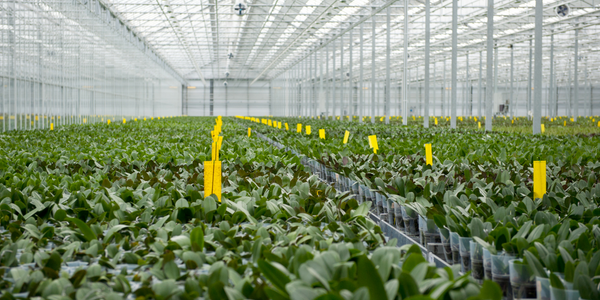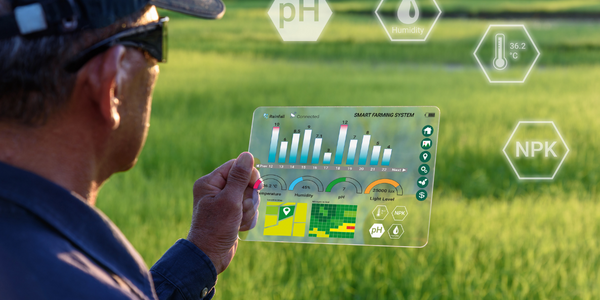Download PDF
GreenCollar Utilizes Fulcrum for Real-Time Environmental Data Collection and Management
Technology Category
- Platform as a Service (PaaS) - Data Management Platforms
Applicable Industries
- Agriculture
Applicable Functions
- Field Services
- Quality Assurance
Use Cases
- Remote Asset Management
- Real-Time Location System (RTLS)
Services
- Data Science Services
The Challenge
GreenCollar, an environmental markets company, manages over 445,000 acres of forest in Australia. They use environmental markets to protect these forests from deforestation, which requires technical survey, monitoring, evaluation, and management systems. These systems also need to be audited by third parties and government agencies. The company collects a variety of data, including forest biomass data, flora & fauna survey data, verification of roads and tracks, monitoring of farm infrastructure condition, and assessment data on a property to examine a project’s ability to move into the next phase of analysis. However, the large volume of data collection and management, along with the need to complete projects efficiently, was restricted by the delay between collecting data in the field and analyzing it back at the head office to determine the next steps of their projects.
About The Customer
GreenCollar is a dedicated natural resource management and environmental markets company based in Australia. They have developed over 30 projects that protect native forests on private lands. The company currently has over 445,000 acres of forest under management in Australia and this figure grows every month. Using environmental markets, they protect these forests from deforestation. This requires technical survey, monitoring, evaluation, and management systems to be implemented and audited by third parties and government agencies.
The Solution
GreenCollar Group uses Fulcrum not only to collect data, but also as a navigation and feature validation tool. The data collection, observations, and general management of Green Collar’s projects now operate in real-time, which has significantly changed the business. If they detect a change from their remote sensing systems, or need data collected to make an instant decision, they get a team on the ground and have data instantly syncing back to head office enabling zero time-lag decision making. As data is syncing, they can feed it into their database or report on an event immediately by exporting data in tables or pdf reports. This not only allows real-time management of information but has taken out several processes for data analysis and reporting.
Operational Impact
Related Case Studies.

Case Study
Intelligent Farming with ThingWorx Analytics
Z Farms was facing three challenges: costly irrigation systems with water as a limited resource, narrow optimal ranges of soil moisture for growth with difficult maintenance and farm operators could not simply turn on irrigation systems like a faucet.

Case Study
Greenhouse Intelligent Monitoring and Control Solution
Farming Orchids is the most successful form of precision farming in Taiwan, and also the most exported flower. Orchids need a specific temperature and humidity conditions to grow and bloom, and its flowering time may not be in line with market demands, so the price collapses when there is overproduction. Therefore, some farmers began to import automated greenhouse control systems for breeding and forcing, which not only improves quality, but also effectively controls the production period and yield to ensure revenue. In 2012, an orchid farmer built a Forcing Greenhouse of about 200 pings (approximately 661 Square Meters) in Tainan, Taiwan. The system integrator adopted Advantech’s APAX-5000 series programmable automation controllers to build the control platform, coupled with Advantech WebAccess HMI/SCADA software, to achieve cloud monitoring. The staff of the orchid field can monitor important data anytime via smart phone, iPad, and other handheld devices, and control the growth and flowering conditions. System requirements: In the past, most environmental control systems of orchid greenhouses in Taiwan used PLCs (Programmable Logic Controller) with poorscalability and control, and could not be connected to the Internet formonitoring from the cloud. For advanced database analysis and networking capability, the PC platform must be adopted. Therefore, PAC Systems (Programmable Automation Controller) with both PLC programming capabilities andPC functions is a better choice.The environmental control of the Orchid greenhouse switches on and off devices like fan, shade net, cooling/heat pump, liquid flow control, water-cooling wall etc. It is controlled by a control panel of electric controllers, and is driven by a motor, to adjust the greenhouse temperature, humidity, and other environmental conditions to the set parameters.

Case Study
Enabling Internet of Things Innovation in Agriculture
DigiBale, wanted to apply technology know-how and IP from implementations successfully to more agriculture sectors including cotton, forestry, sugarcane and cattle. However, farmers and growers still have worries about the connected technology.

Case Study
Precision beekeeping with wireless temperature monitoring
Honeybees are insects of large economic value and provide a vital service to agriculture by pollinating a variety of crops. In addition, bees provide us with valuable products such as honey, beeswax, propolis, bee venom, etc. Monitoring of honeybee colony health, population, productivity, and environmental conditions affecting the colony health have always been exceedingly difficult tasks in apiculture. Research has shown that even small deviations (by more than 2°C) from the optimal temperatures have a significant influence on the development of the brood and the health of adult bees.







